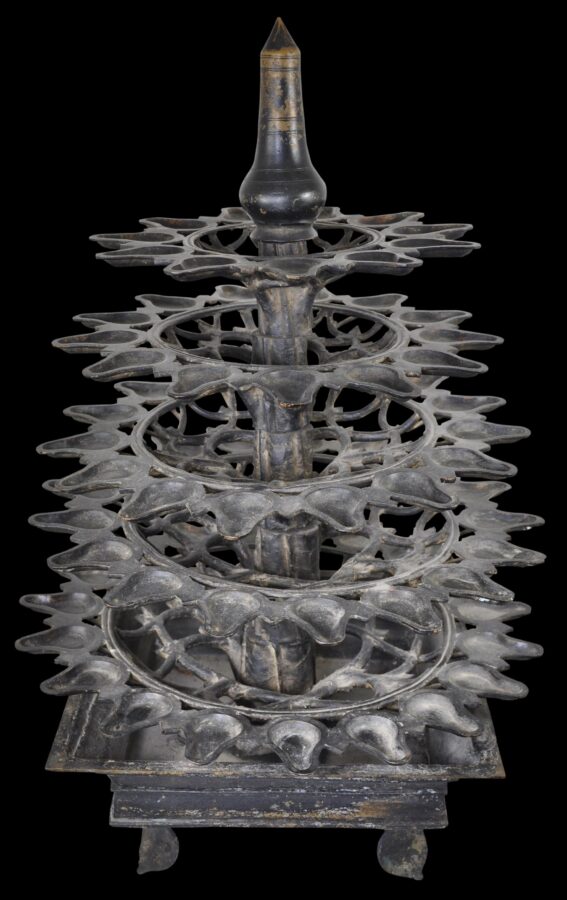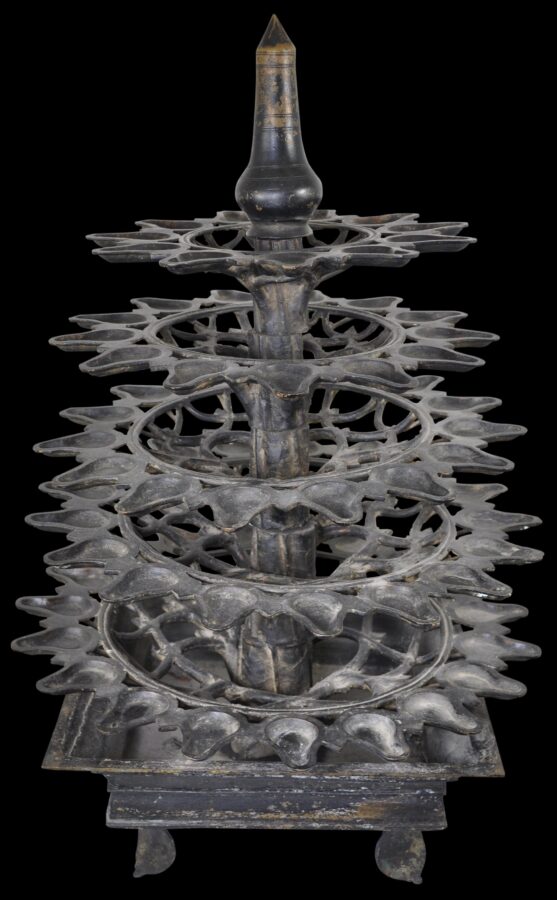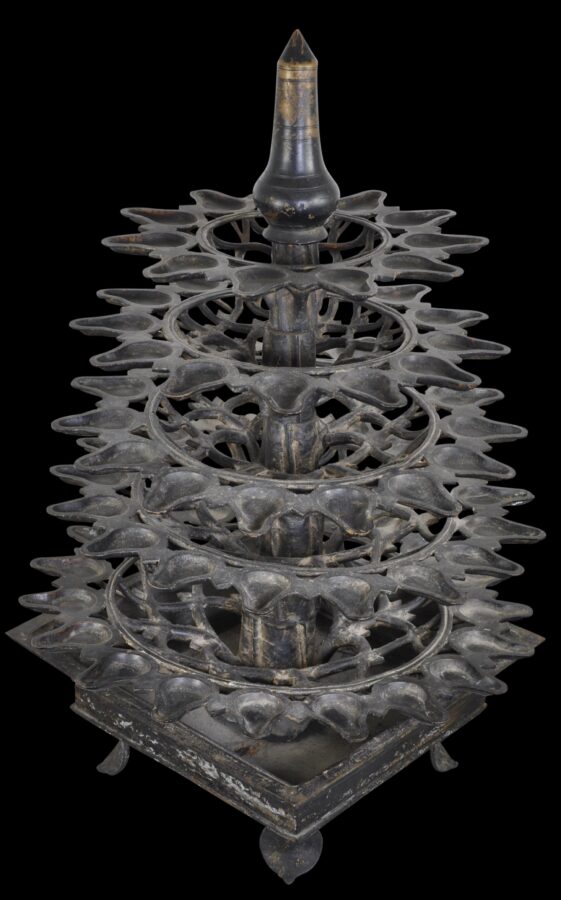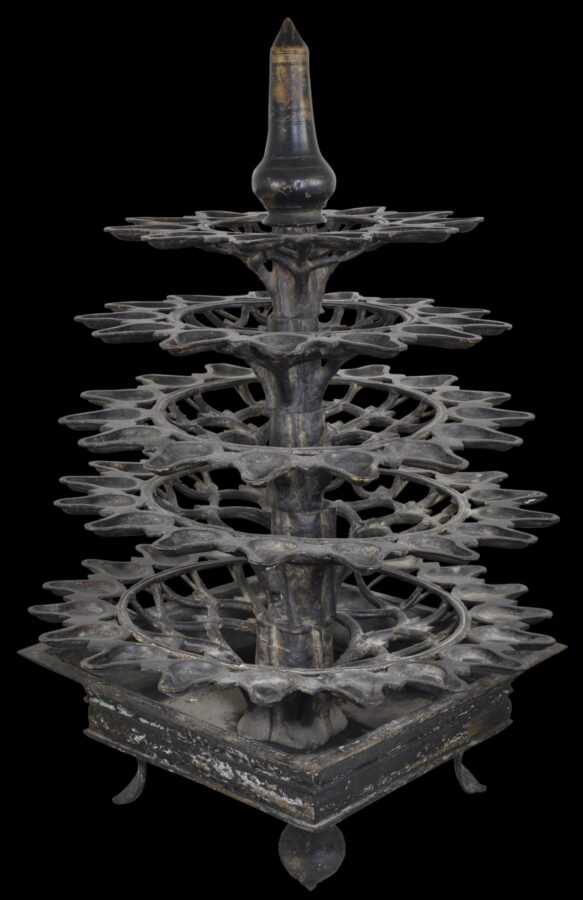Enquiry about object: 9724
Indian Temple Tree Lamp (Vriksha Deepa)
Deccan or Kerala, India 19th century
height: approximately 60cm, width: 41.3cm, weight: very heavy
Provenance
UK art market
This standing lamp, which would have been used in a temple hall in central India, has been cast as a tree – the central stem has been cast as a trunk and the branches that radiate around the trunk hold dozens of small oil lamps, each in the shape of a sacred pipal leaf. Such a lamp shaped as a tree in known as a vriksha deepa. It has been cast from brass or bronze.
The lamp stands on four feet, each shaped like the hood of the hooded cobra. On these sit a square tray and from this rises the lamp with five roundels of decreasing size, lined with oil pans, and finally, an elongated lotus bud finial. The upper-most round has eleven oil pans, then 13, then 15, then 17 and finally 19 – or 75 in total.
Lamps are an essential component of Hindu worship in India. The lighting of a lamp and the offering of light and fire serves as a sacred token of devotion and benediction. Light expels darkness and so becomes an analogy of wisdom over ignorance, plus the gods are believed to dwell by the light of a sacred lamp.
Devi (1985, p. 95) illustrates a version of this lamp, attributes it to 18th century Kerala, and calls it a kadamba vriksa (vriksha) or a ‘tree-of-life’ lamp.
The lamp here is sculptural and has ample signs of use.
References
Anderson, S., Flames of Devotion: Oil Lamps from South and Southeast Asia and the Himalayas, UCLA Fowler Museum of Cultural History, Los Angeles, 2006.
Devi, P. et al., Aditi: The Living Arts of India, Smithsonian Institute Press, 1985.
Kelkar, D.G., Lamps of India, Publications Division, Ministry of Information and Broadcasting, India, 1961.







